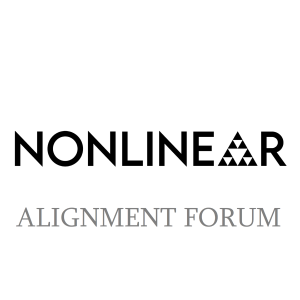

The Nonlinear Library: Alignment Forum
AF - New report: Safety Cases for AI by Josh Clymer
2024-03-20
Link to original articleWelcome to The Nonlinear Library, where we use Text-to-Speech software to convert the best writing from the Rationalist and EA communities into audio. This is: New report: Safety Cases for AI, published by Josh Clymer on March 20, 2024 on The AI Alignment Forum.
ArXiv paper: https://arxiv.org/abs/2403.10462
The idea for this paper occurred to me when I saw Buck Shlegeris' MATS stream on "Safety Cases for AI." How would one justify the safety of advanced AI...
Link to original article
Welcome to The Nonlinear Library, where we use Text-to-Speech software to convert the best writing from the Rationalist and EA communities into audio. This is: New report: Safety Cases for AI, published by Josh Clymer on March 20, 2024 on The AI Alignment Forum.
ArXiv paper: https://arxiv.org/abs/2403.10462
The idea for this paper occurred to me when I saw Buck Shlegeris' MATS stream on "Safety Cases for AI." How would one justify the safety of advanced AI systems? This question is fundamental. It informs how RSPs should be designed and what technical research is useful to pursue.
For a long time, researchers have (implicitly or explicitly) discussed ways to justify that AI systems are safe, but much of this content is scattered across different posts and papers, is not as concrete as I'd like, or does not clearly state their assumptions.
I hope this report provides a helpful birds-eye view of safety arguments and moves the AI safety conversation forward by helping to identify assumptions they rest on (though there's much more work to do to clarify these arguments).
Thanks to my coauthors: Nick Gabrieli, David Krueger, and Thomas Larsen -- and to everyone who gave feedback: Henry Sleight, Ashwin Acharya, Ryan Greenblatt, Stephen Casper, David Duvenaud, Rudolf Laine, Roger Grosse, Hjalmar Wijk, Eli Lifland, Oliver Habryka, Sim eon Campos, Aaron Scher, Lukas Berglund, and Nate Thomas.
Thanks for listening. To help us out with The Nonlinear Library or to learn more, please visit nonlinear.org.
View more
Welcome to The Nonlinear Library, where we use Text-to-Speech software to convert the best writing from the Rationalist and EA communities into audio. This is: New report: Safety Cases for AI, published by Josh Clymer on March 20, 2024 on The AI Alignment Forum.
ArXiv paper: https://arxiv.org/abs/2403.10462
The idea for this paper occurred to me when I saw Buck Shlegeris' MATS stream on "Safety Cases for AI." How would one justify the safety of advanced AI systems? This question is fundamental. It informs how RSPs should be designed and what technical research is useful to pursue.
For a long time, researchers have (implicitly or explicitly) discussed ways to justify that AI systems are safe, but much of this content is scattered across different posts and papers, is not as concrete as I'd like, or does not clearly state their assumptions.
I hope this report provides a helpful birds-eye view of safety arguments and moves the AI safety conversation forward by helping to identify assumptions they rest on (though there's much more work to do to clarify these arguments).
Thanks to my coauthors: Nick Gabrieli, David Krueger, and Thomas Larsen -- and to everyone who gave feedback: Henry Sleight, Ashwin Acharya, Ryan Greenblatt, Stephen Casper, David Duvenaud, Rudolf Laine, Roger Grosse, Hjalmar Wijk, Eli Lifland, Oliver Habryka, Sim eon Campos, Aaron Scher, Lukas Berglund, and Nate Thomas.
Thanks for listening. To help us out with The Nonlinear Library or to learn more, please visit nonlinear.org.
Comments (3)
More Episodes
All Episodes>>You may also like
Creat Yourt Podcast In Minutes
- Full-featured podcast site
- Unlimited storage and bandwidth
- Comprehensive podcast stats
- Distribute to Apple Podcasts, Spotify, and more
- Make money with your podcast
It is Free












